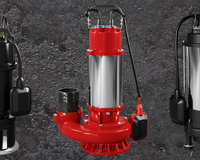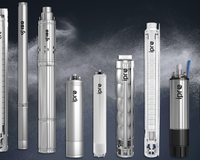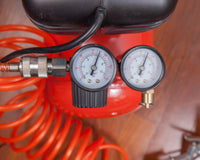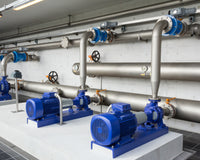There are many types of pumps available on the market. Individual models differ in parameters, specifics and purpose. If you are wondering what membrane pumps are characterized by, our article is for you. In it you will find a description of the operation of these devices, as well as a number of advantages that their use brings.
Principle
As the name suggests, membrane pumps work thanks to the use of membranes. However, how is the whole process more accurately? Important elements are, among others The valves mounted with high precision, which we encounter at the inlet and output of the pump. It is thanks to them that it is possible to cause a suction effect arising on the suction side and the pressing effect - on the pressure side. It should also be added that individual pump models differ in the drive used in them. Some suggestions work on the basis of an internal combustion engine or electric motor, others based on a pneumatic or hydraulic drive. It is thanks to such a medium, i.e. the drive, it is possible to influence one of the membranes, which in turn is connected by a common axis with the other of this type of element. The cyclical movements caused thanks to this are repeated taking into account the continuity of the drive.
In the case of a membrane pump, parameters are important, such as maximum performance; The actual performance, which depends, among others from the type of material we deal with and from its viscosity and density; or the pressure achieved. It is also worth noting whether a given pump model has a smooth adjustment of compressed air supply, the ability to include in the automatic control system, the ability to regulate maximum efficiency using the valve, as well as control of the number of work cycles.
Membrane pumps - application
Membrane pumps are a term covering a wide group of devices that find their use in many situations. The first association is certainly the chemical, galvanic, mechanical industry, as well as the construction industry. However, that's not all.
Membrane pumps, thanks to their specificity, allow you to safely use the liquid without pouring it or pollution. These tools are also distinguished by high tightness, which in turn is a guarantee of safety for individual employees. In addition, their use allows you to maintain maximum hygiene. All this makes him Membrane pumps are widely used in the food, pharmaceutical and cosmetics industries.
Membrane pumps - advantages of application
Specialists agree: Membrane pumps are primarily high efficiency and efficiency. However, there are many more advantages of these tools. Characteristic self -caring is possible even at a depth of a few meters, and each of the pumps is characterized by versatility, i.e. the possibility of performing activities such as mixing, dosing or pumping. The innovation of membrane pumps can also be seen in the fact that they are resistant to the harmful factors they are in contact with. Perfect for contact with flammable liquids, chemically aggressive, or those that have constant impurities.
The advantages of membrane pumps also include the possibility of working at low temperatures, lack of foaming and overheating of fluids, or the ability to work with the use of polluted air. Modern models available on our website also have a relatively small number of parts, which makes them work more efficiently, and at the same time are less susceptible to failures. They also stand out with greater liquidity, and the number of adverse pulsations is reduced to almost zero. Based on all these features, we can conclude that currently available membrane pumps combine everything that is best for efficient and effective action in various areas.
Quality and the materials used
The good operation of the membrane pump depends largely on the materials used during its production. It turns out that to perform the so -called The wet parts, i.e. one that has direct contact with the fluid, is used, among others Plastics, such as grounding acetal, polypropylene, cane (PVDF), as well as metals: cast iron, Hastelloy, stainless steel, aluminum. Other raw materials are used during the production of so -called working elements. As for the membranes, it is valued, among others Santopren, Neoprene, Geolast, Viton, Buna-N, Teflon/Santopren, Hytrel; The nests are based on hardened stainless steel, aluminum, cast iron, santoprene or polypropyle. In the production of balls for valves, in turn, materials such as Geolast, polyurethane, acetal, neoprene, Santopren, Viton, stainless steel, Buna-N, Teflon and Hytrel for food products are used.






